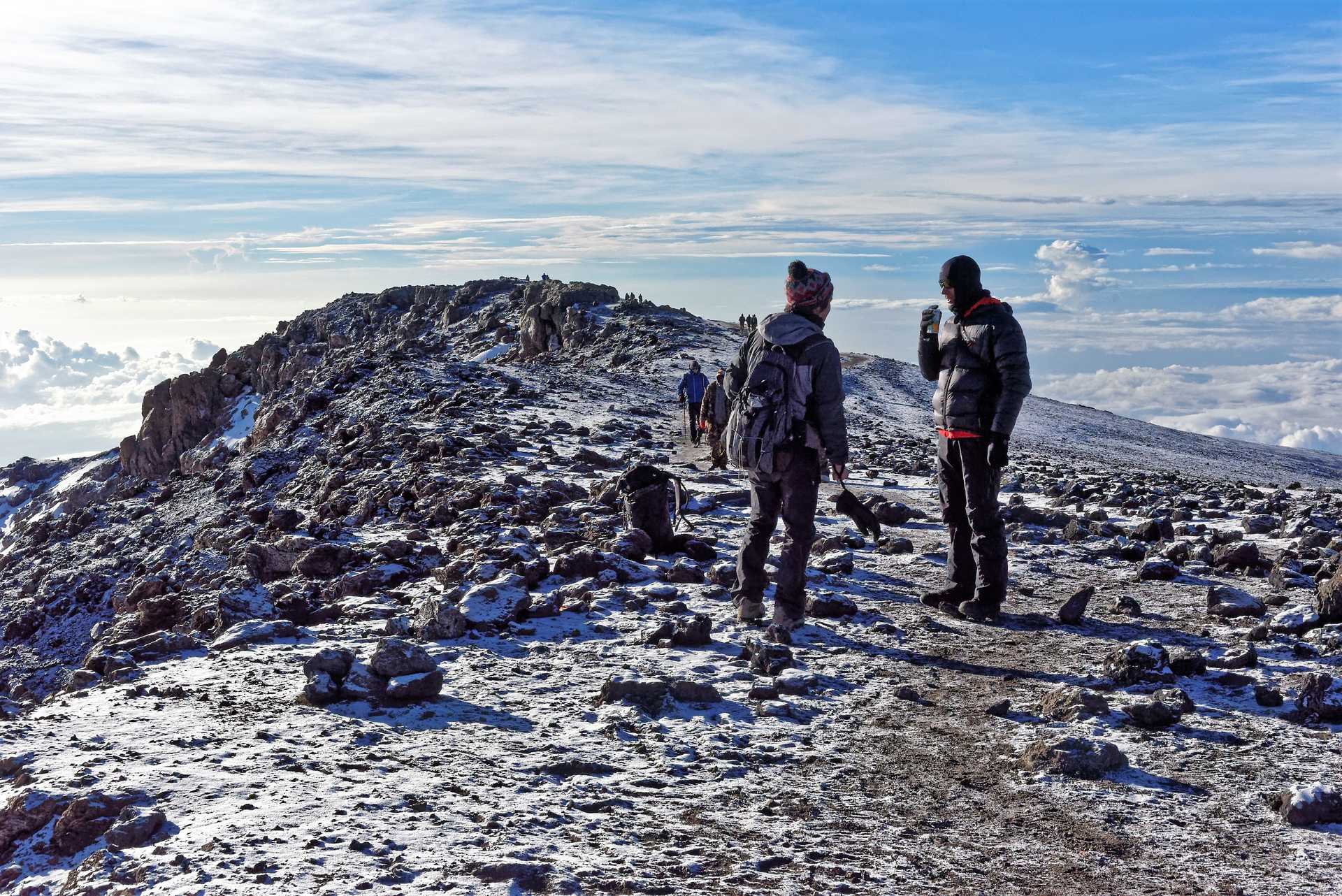
What causes altitude sickness and who does it affect?
When altitude sickness turns bad: HACE and HAPE
Right – that’s enough about altitude sickness itself. Let’s move onto what you came here for in the first place…

Protecting yourself against altitude sickness on Mount Kilimanjaro
Trekking Mount Kilimanjaro should and can be one of the greatest experiences you’ll ever have; it really is that good. But the big deal with climbing Kilimanjaro is that you can gain a lot of altitude in a comparatively short space of time. That doesn’t mean that your adventure is doomed to failure because of altitude sickness: far from it. The right combination of preparations and precautions will see you admiring the spectacular views from the top of Africa’s highest mountain, (hopefully) laughing in the face of altitude sickness and wondering what all the fuss was about.
As I said earlier, getting yourself physically fit is a good step towards preventing altitude sickness in the first place. Cardiovascular activity is key as this will strengthen your heart, improve lung performance and better facilitate the transport of oxygen around your body via the bloodstream. Begin regularly cycling, swimming, running, power walking or whatever else floats your exercise boat five or six months before you’re due to trek Mount Kilimanjaro and stick at it until you’re as healthy as a healthy thing and you’ll be golden. Or possibly red and sweaty.
For a few nights before the trek itself, cut out the booze and/or ciggies (plenty of time for these after the trek when you’re celebrating your amazing achievement) and get some good sleep. And when you’re actually trekking, don’t go at it hammer and tongs and knacker yourself out unnecessarily; there’s no need to rush and taking it steadily means you’ll have more time to appreciate some of the most gob-smackingly gorgeous trek scenery on the planet.
Tanzania is apt to be hot and sunny, so dress appropriately for the conditions during the day, wear wide-brimmed sun hat or a baseball cap with a brim to protect your head and make sure you drink enough water or juice. All the time. Even if you think you’ve drunk enough, you probably haven’t drunk enough. And since the symptoms of dehydration aren’t so far removed from those of mild altitude sickness, why take the risk of getting kicked off the mountain simply because you hadn’t, er, drunk enough?
Lastly, there are medicines that you can bring to help you deal with the symptoms of altitude sickness. Basic painkillers (paracetamol, ibuprofen) can take care of low-level headaches and relieve basic aches and pains, while the drug Acetazolamide (brand name Diamox) is widely considered to be effective in managing altitude sickness as a whole. A couple of things to be aware of though; Acetazolamide has side effects for some folk – it can cause disturbed sleep, pins and needles and is also inclined to make you pee more often than you normally would. Oh, and it reportedly makes fizzy drinks taste peculiar or disgusting depending on your palate.










